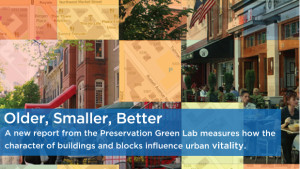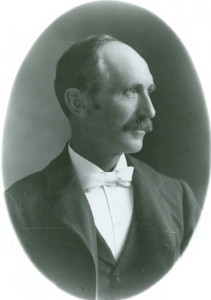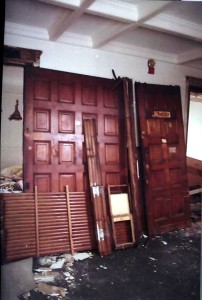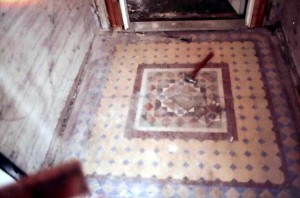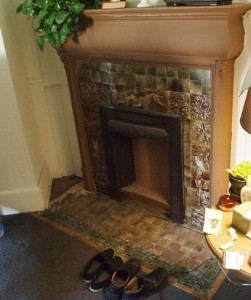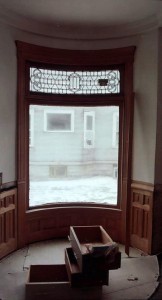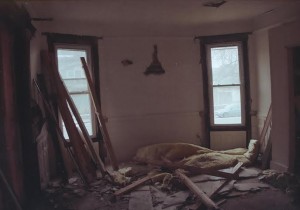
Welcome to the
Healy Project
Join us on Facebook
Send us an Email
Grandstanding and Stonewalling at City Hall: Trashing the Public Trust
Last Friday Minneapolis Mayor Betsy Hodges went on her political Facebook page to take Nicole Curtis to task for her criticism of City Council members. Curtis, the “Rehab Addict” had criticized City officials on her Facebook page for their failure to answer to the corrupted process that led to the demolition of the Orth House on February 25th. Since then, an all-out slugfest has ensued on social media, distracting people from the issue of the lying that went on in public hearings and in District Court about the condition of the Orth House. (See previous posts on this blog.)
Let’s turn our attention away from the demolished Orth House. Let’s cut through the smokescreen issuing from City Hall and focus upon the corrupted process of testimony that brought down the house. Mayor Hodges and CM Bender need to stop pitying themselves and do some explaining about the lack of integrity in the process of testimony before the City Council. Their attack on Curtis, a resident of CM Bender’s ward, is nothing short of self-serving meanness.
Curtis is not just a media star; she is a Minneapolis taxpayer. City officials going after a constituent-critic on social media is unethical, to say the least. Hodges and Bender have gone so far as to kick constituent-critics off their Facebook pages. Democracy in action? If city officials attacked a developer the way they are attacking their own constituents, they’d be slapped with a lawsuit so fast their heads would spin. Apparently, they think it’s OK for those in power to go after private citizens. There oughta be a law. Well, in fact, there is. It’s called the City’s Code of Ethics.
If the goal of these elected officials is to silence their critics, they are not doing a very good job of it. People don’t like feeling shut out of expressing their views to those who represent them. People like even less being fed a load of blather generated from lies as answer to their concerns. 
For the record:
1. The owner of the Orth House filed an appeal to demolish an historic resource. Hodges voted to make it an historic resource in 2013. It became no less historic after CM Bender took office.
To reiterate from a previous post: “At the appeal hearing chaired by CM Bender, both Michael Crow (owner) and John Smoley (Planning staffer) were allowed presentations in favor of demolition. The HPC’s position was reported but not presented; reporting is not a substitute for a persuasive presentation earnestly defending the HPC’s position. It seems appropriate that some provision be made in cases which staff’s professional opinion differs from the decision-making making body.
Something is amiss when the recommendations of both presentations are in agreement with one another. By definition, an appeal is a scenario where one opinion is not in agreement with another.”
In their own defense, City officials trot out the judge’s findings on the Healy Project’s MERA lawsuit to stop the demolition of an historic resource. These findings, like the City Council’s 11-2 vote to demolish the Orth House, were based on false testimony. The lies continue.
2. Mayor Hodges cites a post from a local blogger to document the vulgar comments being made about CM Bender. It turns out that these comments were cut out of threads of many hundreds of comments on Curtis’s “Rehab Addict” Facebook page. Citing this blogger as a credible source of information is like citing Glenn Beck as proof that Obama wasn’t born in the US.
The Twitter feed from this blogger is a nonstop tirade of name-calling against CM Bender’s detractors, including members of the Healy Project. Last year, the blogger doxed Curtis, a single mother. This is as low as you can go. Doxing is a tactic used to threaten and silence women (primarily), so the Twitterer pretending he’s protecting CM Bender from gendered attacks is total hogwash.
The Healy Project conceded that the house’s demolition was a determined matter. We hoped that the process issues could be examined separately from one’s feelings or opinions about the house. CM Bender’s response via posting on Facebook a decision based on the corrupted testimony is a distraction from our inquiry for examination of protocol and process. It’s time for City officials to stop grandstanding and start talking to Minneapolis citizens.
Elected City officials should not be fueling vitriol against their own constituents. If they’re so thin-skinned, they should consider new career paths. Let’s take the “discussion,”if it can be dignified with the term, off Facebook and Twitter and turn to addressing the issue of corrupted testimony. To refuse to do so undermines the public trust.
Until city officials get serious about examining this process, Mayor Hodges, CM Bender, and other officials will have no credibility with many of their constituents.
Their attack on Nicole Curtis has become a national story. Their foolish social media campaign against her has made Minneapolis into a laughingstock.
In January of last year: A political dogfight breaks out in New Jersey after one of the governor’s aides initiated “traffic problems” on a commuter bridge. The issue behind the controversy was lucrative development contracts (what else?). An all-out battle ensued involving the governors of NY, NJ, the Port Authority, and mayors in NJ cities. It was brutal. However, not once did any of them complain that their feelings had been hurt by their political opponents.
No problem was ever solved when those in power refused to sit down and talk. Come on, Mayor Hodges and CM Bender. Get off the low road of social media and get down to fixing problems and moving ahead.
T.B.
The Healy Project has sent this letter to City Hall, outlining how false testimony played a role in the decision-making process regarding the demolition of the Orth House. The physical evidence revealing these lies is in salvagers’ storehouses, in photos and video, and until demolition takes place, in the Orth House itself.
Please call or write your council member, requesting that they take a serious, objective look at this process. Minneapolis CMs by ward: kevin.reich@minneapolismn.gov, cam.gordon@minneapolismn.gov, jacob.frey@minneapolismn.gov, barbara.johnson@minneapolismn.gov, abdi.warsame@minneapolismn.gov, elizabeth.glidden@minneapolismn.gov, alondra.cano@minneapolismn.gov, lisa.bender@minneapolismn.gov, john.quincy@minneapolismn.gov, andrew.johnson@minneapolismn.gov, linea.palmisano@minneapolismn.gov. Also, please thank the two council members who courageously voted against demolition: blong.yang@minneapolismn.gov, lisa.goodman@minneapolismn.gov.
The Healy Project
Preserving the architectural legacy of T. P. Healy
A nonprofit • www.healyproject.org
January 28, 2015
Minneapolis City Council
City Hall, Room 307
350 South Fifth Street
Minneapolis, MN 55415
To: Members of the Minneapolis City Council
SUBJ: Testimony regarding the property at 2320 Colfax Avenue South
The Orth House, 2320 Colfax Avenue South, is on the verge of demolition. That issue is settled. The intent of this letter is to examine the decision-making process. Opinion remains divided on this issue, but no matter where we stand, the process itself can be analyzed separate from one’s opinions and feelings regarding the Orth House.
The Healy Project received an e-mail from a neighborhood resident subcontracting salvage work from City Salvage on the Orth House. We have video documentation of the Orth House interior from this individual. (Please review the attached communication now.)
Compare the reality of the integrity of the interior with the attached statements that were made during testimony to decision-making making bodies. These statements, while inaccurate, were given a great deal of credibility in the decision-making process. They even made their way into staff reports and presentations. These inconsistencies are not within the realm of differences of opinion. Phrases such as “completely rebuilt,” “gutted to the studs,” and “essentially removing the upper two floors” have definite meanings that are not consistent with physical reality.
From this discovery, we of the Healy Project raise four issues related to the process of public testimony that need to be addressed:
1. Real estate development is a profitable enterprise. The Heritage Preservation Commission (HPC) and the City Council heard much false testimony regarding the condition of the Orth House. We know that now. Michael Lander, the developer; Tom Dunn, the real estate broker; Michael Crow, the landlord; and Amy Lucas, the consultant all presented information that was undeniably inaccurate. They all had a financial incentive to do so.
City planner John Smoley repeated these inaccurate statements. Smoley argued before both the HPC and the City Council in 2013 that the Orth House should not be designated as an Historic Resource, largely because of condition. In the course of the Healy Project’s Minnesota Environmental Resources Act (MERA) lawsuit, Smoley testified that he first laid eyes on the Orth House in January, 2014.
How can council members be assured that they are getting accurate information and that staff has done its due diligence?
2. During the 2013 testimony, members of the Healy Project testified to important observations, such as the fact that the entire front facade, including clapboard and original bowed windows were intact inside the porch enclosure. That is a significant finding regarding architectural integrity. However, with the updated staff report in 2014, new information that was made available to staff from advocates to preserve the house was not incorporated into either the staff report or presentation. This information was factual and directly observable. However, new information provided by the consultant for the developer was incorporated into the staff report and presentation–information that was not directly observable fact, but rather a matter of opinion and conjecture. Therefore, we ask you to recognize that:
Bias is evident when factual information is neither reported or presented when it does not support the staff recommendation.
3. The Heritage Preservation Commission (HPC) in 2014 denied the application for the demolition of an Historic Resource. They also ordered a designation study. City planner John Smoley argued for approval of the demolition permit. Owner Michael Crow filed an appeal to demolish an Historic Resource.
At the appeal hearing chaired by CM Bender, both Michael Crow and John Smoley were allowed presentations in favor of demolition. The HPC’s position was reported but not presented; reporting is not a substitute for a persuasive presentation earnestly defending the HPC’s position. It seems appropriate that some provision be made in cases which staff’s professional opinion differs from the decision-making making body.
Something is amiss when the recommendations of both presentations are in agreement with one another. By nature and definition, an appeal is a scenario when there is one opinion that is not in agreement with another.
4. When the Healy Project sued owner Michael Crow under Minnesota Environmental Resources Act (MERA), city planner John Smoley appeared as a witness on owner Michael Crow’s behalf. Because of his academic credentials and his employment as a city planner for the City of Minneapolis, the Court regarded Smoley as an expert witness.
The consequence of allowing false information to enter the process at the City level is that City staff appeared in District Court testifying under oath to information that we now know to be false.
The Healy Project requests that the concerns raised in this letter be given serious consideration and discussion. In the future, integrity of process is paramount for maintaining the integrity and the credibility of the City of Minneapolis. The integrity and the credibility of the City of Minneapolis has been clouded by a decision- making process dominated by false testimony. It would seem prudent to ask the questions: How did this happen? What is to prevent it from happening again?
Very truly yours,
Anders Christensen, President
Brian Finstad, Board Member
cc: Mayor Betsy Hodges
Minneapolis Heritage Preservation Commissioners
Erik Hansen, Burns and Hansen
Erik Nilsson, Minneapolis City Attorney’s Office
**Attachment: E-mail about condition of the Orth House, December 2014
See also the Healy Project blog posts:
Poisoning the Well: Testimony about 2320 Colfax Avenue South
The Truth Will Out: Lies that brought down 2320 Colfax Avenue South
The Truth Will Out II: More lies that brought down 2320 Colfax Avenue South
______________________________________________________________________
**See the e-mail here.
To view video and photos taken on December 9-12, 2014, by salvage subcontractor Ezra Gray, click here.
 The Orth House will be demolished, but discussion about how this came to pass ain’t over.
The Orth House will be demolished, but discussion about how this came to pass ain’t over.
What a difference two weeks makes. Earlier this month, a salvage company began removing architectural components of the Healy house at 2320 Colfax Avenue South in preparation for its demolition. The number of architectural items that came out of that house stunned even those of us who had never believed that nothing was left of Healy’s original 1893 house: fireplaces, doors, millwork, tiles, stained and leaded glass. The items salvaged are now for sale on City Salvage & Antique’s web site, marketed for the exquisite art they are, worth a small fortune.
A subcontractor of City Salvage on December 5 reported: “They wisely got the glass out first. They were busy tonight removing the raised-panel cherry wainscoting from the entry hall and stairs. The oft-discussed original first floor front facade is in fact still there, hiding inside the enclosed porch. Bay windows and bow window side by side, both intact inside and out. They also found a covered ox-eye window on the north wall of the second floor.
All the large doorways communicating 2320’s entry hall, parlors and dining room, each of which had been filled in with drywall and cheap hollow interior doors [by owner Mike Crow], were found still to have 6′-wide, paneled sliding doors hanging intact in their pockets. The Healy signature tile floor uncovered in the vestibule is being removed, destined for re-purpose as a table top.”
These are all things that demolition proponents, including the developer, the owner’s broker, and two preservation experts, claimed repeatedly weren’t there– before the neighborhood association, the Heritage Preservation Commission, the Minneapolis City Council, and, under oath, before District Court.
Photos and video taken on the second floor of 2320 last week and presented in District Court shows that owner Michael Crow gave misleading testimony, repeatedly claiming that the second and third floors were gutted in the reconstruction after the fire in 1991. The details revealed by the salvage operation show his claims to be false. Tom Dunn (real estate broker) of Terra Firma Commercial, the Lander Group (developer), Amy Lucas (historic preservation expert), and City Planner John Smoley all repeated this false testimony. Did they know it to be false or did they fail to do their due diligence?
Anders Christensen and Trilby Busch went on record 43 years ago (November 1981 Twin Cities Magazine article Legacy of a Master Builder) contending that 2320 Colfax is an important part of Healy’s architectural legacy. This claim was made long before the house was threatened with demolition.
In April of 2013, owner Michael Crow told the Minneapolis Heritage Preservation Commission that “everything on the second floor was completely gutted. . .There just isn’t much of the house left.”
Smoley repeated Crow’s misleading testimony: “The interior has been completely lost.” Lucas echoed this, saying, “I don’t know if any of you have been in the house but when it burned, the second and third floors burned completely. So they were rebuilt as small rooms upstairs, so there are sheet rock walls and metal doors.” Dunn summed up these comments with, “There just really isn’t anything worth saving in the building.” Despite these assertions, the HPC declared 2320 an “historic resource.” In May of 2013, the City Council upheld this decision.
However, after the 2013 election, Michael Crow came back to City Hall singing the same tune, but this time to more receptive ears. In March 2014 on a motion by chair Lisa Bender, the Zoning and Planning Committee granted Crow a demolition permit for an historic resource.
Last May, the Healy Project filed suit in District Court to stop the demolition of this historic resource. The case never made it to the trial stage. The Healy Project failed to get a temporary restraining order (TRO) in large part because Crow, Dunn, Smoley, and Lucas once again repeated the false claims initiated by Michael Crow. Since then, the suit has remained on the docket, minus an injunction against demolition.
After the recent revelation that the vast majority of the interior and exterior of the house was intact, the Healy Project decided to revisit the lawsuit. On Friday, December 19th, attorney Erik Hansen appeared in District Court before the Hon. Frank Magill, Jr. to request a TRO, based on the documented revelations of the salvage operation.
Bethany Gladhill, a credentialed expert on historic preservation, testified that in her professional opinion 2320 would be eligible for listing in the National Register of Historic Places, especially if it were included in a Multiple Property Listing of Healy houses in Lowry Hill East. She called 2320 a “transitional” Healy house, in fact, the “lynchpin” in that transition of designs. In her opinion, 2320 has strong integrity of place, of workmanship, and of materials. She respectfully disagreed with several of the findings and the conclusion of Amy Lucas’s report.
Michael Crow’s attorney Steven Harris said the closing between Michael Lander’s development company and Crow is set for Tuesday. It will be Michael Lander’s responsibility to demolish 2320 and the neighboring house at 2316. Crow will receive $950,000 for both properties; Harris requested a bond in that amount if the TRO is granted. A ruling is expected on Monday, December 22nd.
Did Crow lie to his attorney, or did his attorney lie to the judge in expectation of getting a $950k bond in case the judge issued the TRO? Or is there another explanation of these conflicting reports? Did the closing actually take place on the 22nd? Inquiring minds want to know. T.B.]
The next two posts provide detailed documentation of the series of misrepresentations in the testimony of Crow, Dunn, Lucas, Smoley, and the Lander Group throughout the two-year-long series of hearings regarding 2320 Colfax.
“There is only a negligible amount of original trim inside, which is really not worth saving, there’s nothing special about it.” Tom Dunne, President, Terra Firma Commercial, Real Estate Services
“Fires in 1991 and 2011 have left very little interior fabric.” Amy Lucas, Principal, Landscape Research
“Over 75% of the original materials in the home have been replaced due to extensive fires and insensitive remodeling.” Lander Group Development Team, submitted by Collage Architects.
If the above evidence doesn’t convince you that this whole process was poisoned from the start, here are some more statements presented to decision-making bodies, courtesy of Brian Finstad:
“There is not one single room that is in its original state. The only two rooms that are the most intact in the entire building are the foyer or entry and the original living room with fireplace.”
– Mike Crow – Colfax Addendum – 8 Jan 2014
“Besides some wood door frames there is little original fabric at the interior.”
– Amy Lucas, Landscape Research – Report to Pete Keely – 14 Dec 2012
“The interior has been completely lost with the rooming house conversion and fire repairs.”
– Amy Lucas, Landscape Research – Report to Pete Keely – 14 Dec 2012
“Fires in 1991 and 2011 have left little interior fabric . The second and third floors have been completely rebuilt”
– Amy Lucas, Landscape Research – Report to Pete Keely – 14 Dec 2012
“As is common knowledge, the property has endured a number of fires throughout its history with the last fire essentially removing the upper two floors.”
– Assessment of Economic Feasibility of Rehabilitation – Tom Dunn, Terra Firma Commercial – undated
“There is only a negligible amount of original trim inside, which is really not worth saving, there’s nothing special about it. There is one noteworthy concave window on the north side that will be saved, along with a fire place and whatever else there is of value.”
– Assessment of Economic Feasibility of Rehabilitation – Tom Dunn, Terra Firma Commercial – undated
“… the home is nothing close to the original construction. Over 75% of the original materials in the home have been replaced due to extensive fires, and insensitive remodeling.”
– Letter to HPC – Lander Group Development Team; Collage Architects – 17 Feb 2014
“Nearly all of the construction above the first floor and most of the first floor are not Healy constructed components as these have all been replaced… The second and third floors of the structure were gutted down to the studs… nearly all architectural integrity was removed from these two floors …over 70% of the first floor was changed.”
– Letter to HPC – Lander Group Development Team; Collage Architects – 17 Feb 2014
“Fire has gutted the top two floors. Approximately 600 sq.ft. of the total interior has any remains close to the original… There is a fireplace covered with newer construction.”
– Letter to HPC – Lander Group Development Team; Collage Architects – 17 Feb 2014
“The developer will take steps toward preservation. A full photo-documentation of the property interior and exterior will be completed.”
– Letter to HPC – Lander Group Development Team; Collage Architects – 17 Feb 2014
“The second and third floors were burned and the 1992 rehabilitation removed flooring, walls and doors. The plan of the upper floors was also changed during the renovation.”– Historic Evaluation – Amy Lucas, Landscape Research – Mar 2014
Update: On 12/31/2014 KSTP-TV aired a story on 2320 Colfax, featuring an interview with Anders Christensen. To view the story, click here.
–T.B., C.A.C.

On this day that celebrates Planet Earth, residents of our beautiful planet are urged to conserve dwindling resources by recycling everything from plastic bottles to buildings. The “Zero Waste” initiative of the City of Minneapolis similarly encourages citizens to conserve resources:
“Zero Heroes strive to have Zero Waste. They do this by working to first prevent waste, and then by recycling all they can of the waste that remains. To lower this amount of waste we need to take a step beyond recycling: waste prevention. Waste prevention is reducing the amount of waste and the toxicity of waste. Waste prevention saves natural resources, energy, and may even save you money.” City of Minneapolis Web Site

Minneapolis, the Zero Waste city, wants us to recycle and ride bikes–while the City sends hundreds of tons of historic house to the landfill.
However, while the City Solid Waste and Recycling Department is urging citizens to compost and recycle bottles and papers, the City Planning department has been facilitating the demolition of an historic house–which will send 180+ tons of materials to the landfill. This disconnect between saying and doing shows a gobsmacking hypocrisy: Citizens recycle while the City cancels out their efforts by a thousandfold in the demolition of one house.
“The facts are in – no matter how much green technology is employed, any new building represents a new impact on the environment.It makes no sense for us to recycle newspapers, bottles, and cans while we’re throwing away entire buildings and neighborhoods.It’s fiscally irresponsible and entirely unsustainable.”Jerri Hollan, FAIA
“Zero Waste” makes zero sense when the City shows blatant contempt for the most important piece of sustainability–recycling existing buildings. City Planning sent staffer John Smoley to the HPC twice to argue for its “save only the best buildings in the best neighborhoods” policy–and twice, after vigorous debate, the HPC affirmed that that the Orth House, 2320 Colfax Ave. S. is historic and should be placed under interim protection while a designation study is completed. But when the owner’s appeal to demolish was heard before the City Zoning and Planning, CM Lisa Bender, taking the unsupported testimony of the appellants as fact, declared that no viable alternatives existed to wrecking the house, and made a motion to overturn the HPC’s decision. The motion passed with no debate.
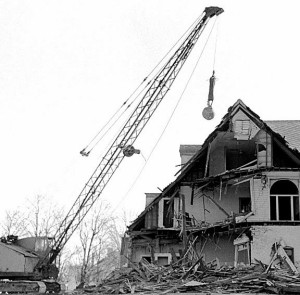
What the City plans for the Orth House and others in the Wedge and other not-good-enough neighborhoods.
“By 2030, we will have demolished and replaced nearly 1/3 of our current building stock, creating enough debris to fill 2,500 NFL stadiums. How much energy does this represent? [E]nough to power California (the 10th largest economy in the world) for 10 years. By contrast, if we rehabilitate just 10% of these buildings, we could power New York for over a year.”UrbDeZine SanFrancisco
The hypocrisy of the City regarding recycling would be laughable if it weren’t so appalling. Minneapolis needs to start practicing what it preaches. Citizens recycling cans and bottles is wasted effort if the government is not encouraging the recycling of buildings.
Don’t jive us, City of Minneapolis. Be a Zero Hero and affirm your alleged commitment to Zero Waste. Allow the historic Orth House to be recycled. The Greenest Building is the one standing.
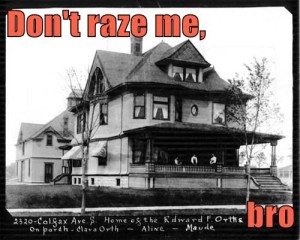
Answer: The one standing.
So says Carl Elephante, Director of Sustainable Design at Quinn Evans Architects. Last year, the National Trust for Historic Preservation released a study, “The Greenest Building: Quantifying the Environmental Value of Building Reuse,” with data that supports this contention. The report uses Life Cycle Analysis (LCA) to compare the relative impacts of building renovation and reuse versus new construction. The description of the study says that it “examines indicators within four environmental impact categories, including climate change, human health, ecosystem quality, and resource depletion.”
 |
| copyright, National Trust for Historic Preservation |
According to the study, wrecking a building and replacing it with a new one comes with very high environmental and economic costs. Let’s look at what how these costs apply to the wrecking of the historic Orth House at 2320 Colfax Ave. S.in order to build the Lander Group’s new four-story apartment building:
First is the cost of destroying the existing structure. Wrecking the Orth House (and its neighbor at 2316) will cost the developer approximately $30,000 each. Add to this cost, the waste of the building materials of the house. The Orth House, a large 6,000+-square-foot house, is estimated to weigh 180 tons, not including the foundation (John Jepsen, Jepsen, Inc.). The Orth House was built in 1893 of lumber from Minnesota’s virgin forests. This irreplaceable resource will be hauled off to a landfill, never to be used again. The plaster, lath, windows, and mechanical systems will similarly be trashed. Yes, some of these features could be removed for salvage; however, the sad fact is that staircases, doors, and windows in a house of this size and vintage cannot easily be fitted into an existing structure. To reuse them, one would have to custom build a structure they could fit into. And what’s the point of that when they are already serving their purpose in the existing house?
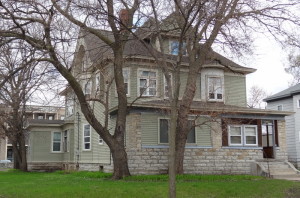 |
| The Orth House today. |
Second is the cost in labor and materials to build the new structure. New construction consumes many resources. The developer’s claim about energy savings makes no sense because new construction consumes so much energy upfront in producing new materials. (U.S.Green Building Council) The proposed apartment building is not one that uses a variety of “green” features and technologies, but a run-of-the mill structure. Recycling bins and bicycle racks do not a green building make. In fact, according to the Trust’s study, when replacing an average existing building with a new, more efficient building, it still requires as many as 80 years to overcome the impact of the construction.
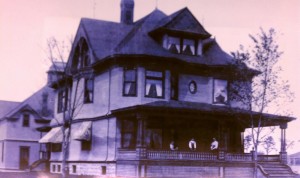 |
| The Orth House c. 1900 |

Recycling existing buildings is essential to creating sustainable cities.
Minneapolis, do the right thing: Support sustainability and save the historic Orth House from the landfill.
–T.B.

